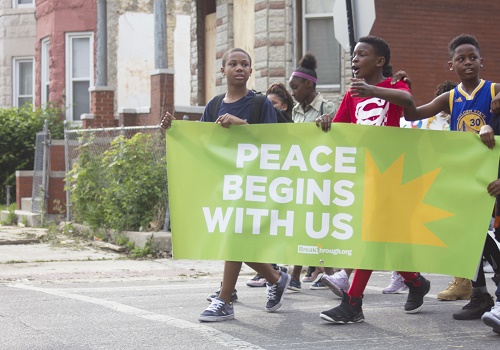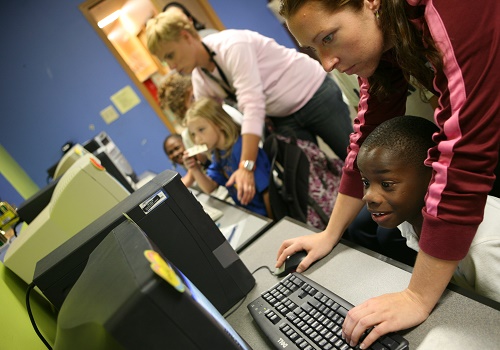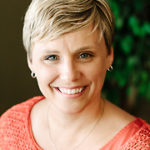The achievement gap is a phrase used to describe the disparity in standardized academic performance that exists between groups of students, most often between the wealthy and impoverished, white students and students of color, and in some cases, between males and females. Scores from the ACT show that just 9% of students in the class of 2017 who came from low-income families, whose parents did not go to college, and who identify as black, Hispanic, American Indian, or Pacific Islander are ready for college. The readiness rate for other students was six times as high, at 54%.
The causes of the achievement gap are often debated. Some believe that the gap is purely related to socioeconomic factors, while others argue that the lack of opportunity has been the biggest contributor. Others reference systemic racist policies that have disadvantaged some groups while advantaging others. We also must consider the cultural mismatch between the predominantly white, mono-lingual, female teaching force (81.9%) with the ever growing ethnically diverse student population (49%). There is merit to all these arguments; however, regardless of the cause or causes of the achievement gap, the fact that we live in a country where this is an expected and on-going phenomenon is troubling.
The responsibility to close the achievement gap rests on many levels. From national, state, and local governmental entities, to corporations, individual citizens and concerned parents, we all have a responsibility to work to ensure children have the opportunity to succeed. Through my work at Breakthrough, I have made it my life’s mission to strive toward closing the achievement gap in East Garfield Park.
There are 6,140 individuals under the age of 18 in East Garfield Park; this makes up 30% of the community. Along with committed parents, resilient students, dedicated school personnel, partner universities and other non-profits, Breakthrough is working to bring additional resources and relationships to attack the achievement gap.
In spaces once considered devoid of opportunity, we plan to create more.
We have a two-pronged approach to closing the achievement gap and reducing the opportunity gaps that exists for children in East Garfield Park. This includes providing high-quality, direct-education services and a youth development strategy that we call the Network Model.
Education Opportunities
We first provide direct education opportunities for students aged two to 18, which includes year-round preschool and after-school education. We also provide a robust menu of extracurricular opportunities. Extracurricular activities have been linked with increasing academic achievement and lowering participation in risky behaviors, but many are cost prohibitive. Greg Duncan, an economist at the University of California Irvine, estimates that families earning $25,000 a year spend roughly $1,300 per child per year on summer camp, vacations, outings, and educational programming; whereas families earning $135,000 year spend almost 10 times that amount.
Tackling Generational Poverty
To address the achievement gap long-term, Breakthrough is working to counter generational poverty that exists in the community. Studies have shown that the more education one earns, the higher his or her earning power will be. In fact, a person with a Bachelor’s degree will earn approximately 60% more than someone with only a high school diploma. Breakthrough’s generational approach begins in our early childhood education program, the Breakthrough Beginners, because the achievement gap is already well established by time a student enters kindergarten.
We partner with families early on to meet the cognitive, social, and physical milestones that their children will need to achieve at high levels throughout their lives. As students move through our programs and onto college, we expect that they will be better prepared and resourced because of their time spent at Breakthrough.
Last year alone, we served just over 1,200 youth participants through our programs. 76% of students either maintained or improved to above average scores in reading, 85% reported supportive relationships with adult staff and volunteers they met at Breakthrough, 100% of students reported an increase in knowledge of STEAM careers, and 94% of preschoolers are prepared for kindergarten. These successes are chipping away at the achievement gap in the community.
Most recently, we have begun to support our students as they transition to college. This year, in partnership with two foundations, we were able to award $30,000 in college scholarships and host a community trunk party for 54 local rising college freshmen. Trunk parties, an initiative created by a Breakthrough student, provide college-bound students with supplies like bedding and toiletries.
“The gifts and support that I receive at Breakthrough Trunk Party will not only provide me with the necessities to begin college,” Crystal Montgomery, 19, said. “But these gifts will be a constant reminder of the community of people that are behind me while I continue on this next chapter of my life.”
By the year 2020, we anticipate our high school and college programming will be more robust to meet the growing need.
Building Social Capital Through Mentorship
Breakthrough’s direct programs would not be effective without a thoughtful and relevant strategy behind them. Therefore, Breakthrough has developed and implemented an innovative approach to build social capital for students in East Garfield Park. We do this through what we call the Network Model and is the second method we use to close the achievement gap.
The Network Model connects youth with caring adults to provide mentorship, access, exposure and accountability as they navigate life. This model not only surrounds students with support and care, but also opens doors of opportunity and provides access to resources that students might not have had otherwise. These caring adults impact students in a variety of ways – as an industry professional who is exposing students to new career fields, such as robotics; as a mentor who encourages a student through trauma; as a running partner who challenges a student to accomplish a personal fitness goal; as a homework helper who provides reading interventions; or as an artist who helps a student express ideas creatively. Through the Network Model, students have more access and opportunity than ever before.
Growing up in East Garfield Park, Otis joined the flag football team when he was 11 and was later introduced to Breakthrough’s arts, enrichment programs, bible study, and positive male role models. These mentors were available during and after program hours, playing a role in helping him reach his goals.
“You really got to know people on a personal level,” he said. “I remember going to Kevin’s house, Bill’s house and Dave’s house. Even when Breakthrough wasn’t open, I could hit them up any time and have them come through to play video games or just to talk.”
To truly address the achievement gap, we need to address its root causes – discriminatory policies, poverty, insufficient opportunities, and cultural mismatches between kids and their teachers/mentors. The work will not be accomplished in my lifetime, but we all must do our part. We never want a student in East Garfield Park to be limited in life because of a lack of opportunity and access.
We never want a student in East Garfield Park to weather the storms of life without supportive relationships. In this community, we reject the continuation of generational poverty and in its place, strive for prosperity for all who call this neighborhood home.
Dr. Marcie Curry, Senior Director of the Breakthrough Youth Network (BYN), is responsible for oversight of all of Breakthrough’s education and youth development programs. Marcie holds a BA in Secondary English Education (1997), a MA in Educational Leadership/Organizational Change (2012), and an Ed.D in Educational Leadership (2018). Marcie and her family have lived in East Garfield Park, where she has been working to close the achievement gap, for 18 years.



